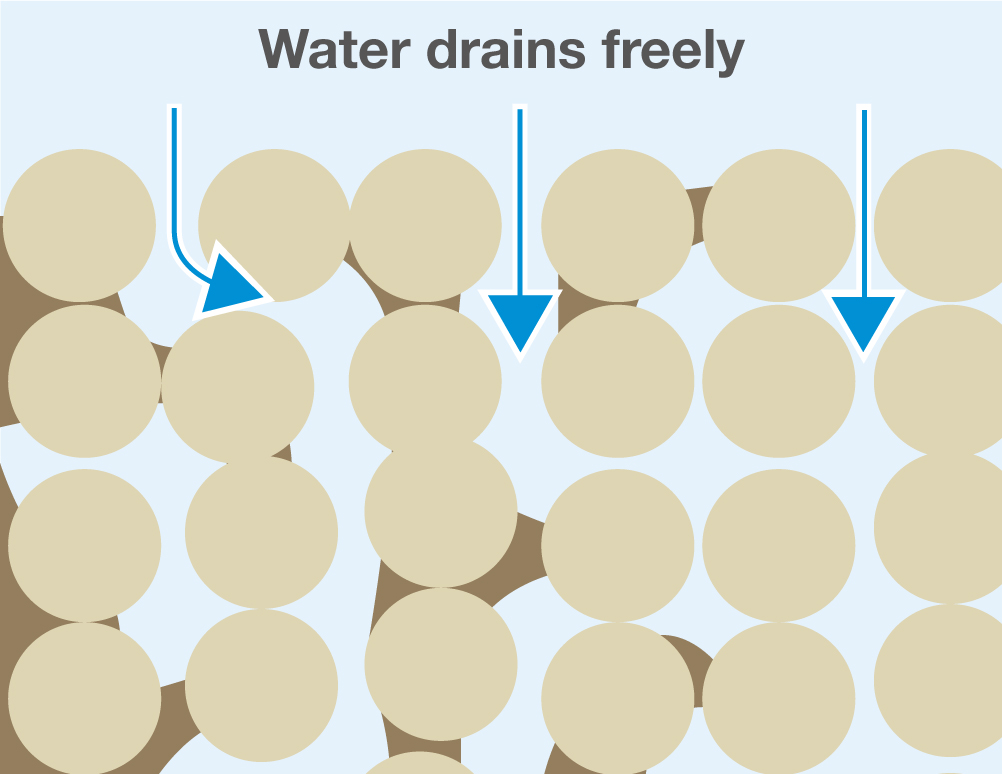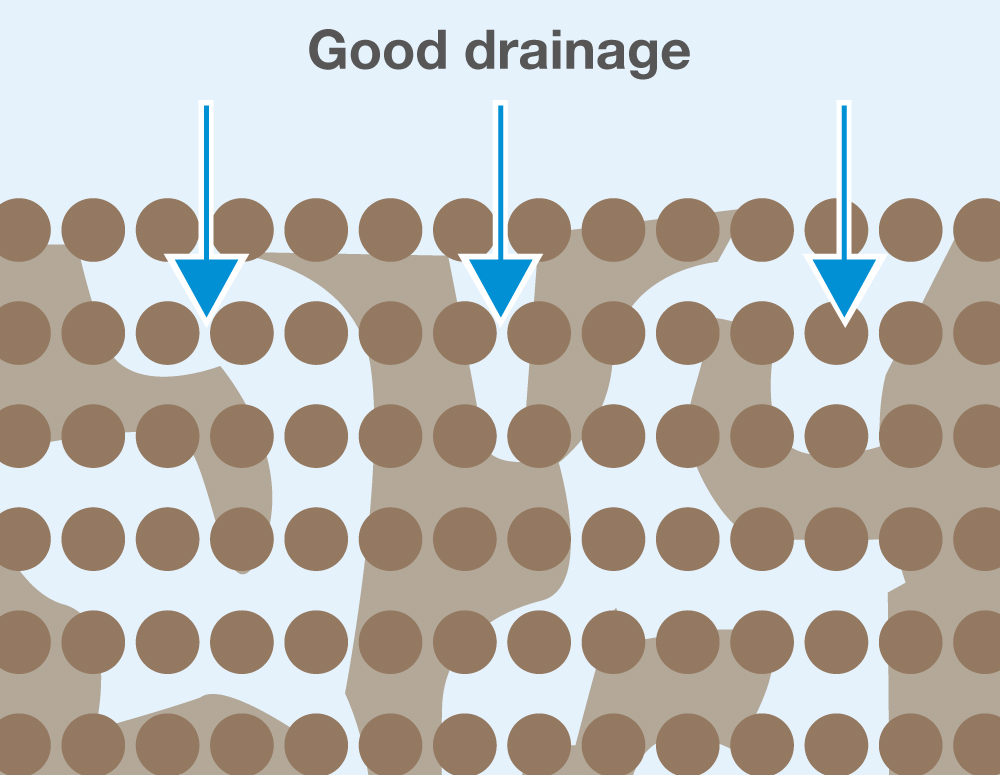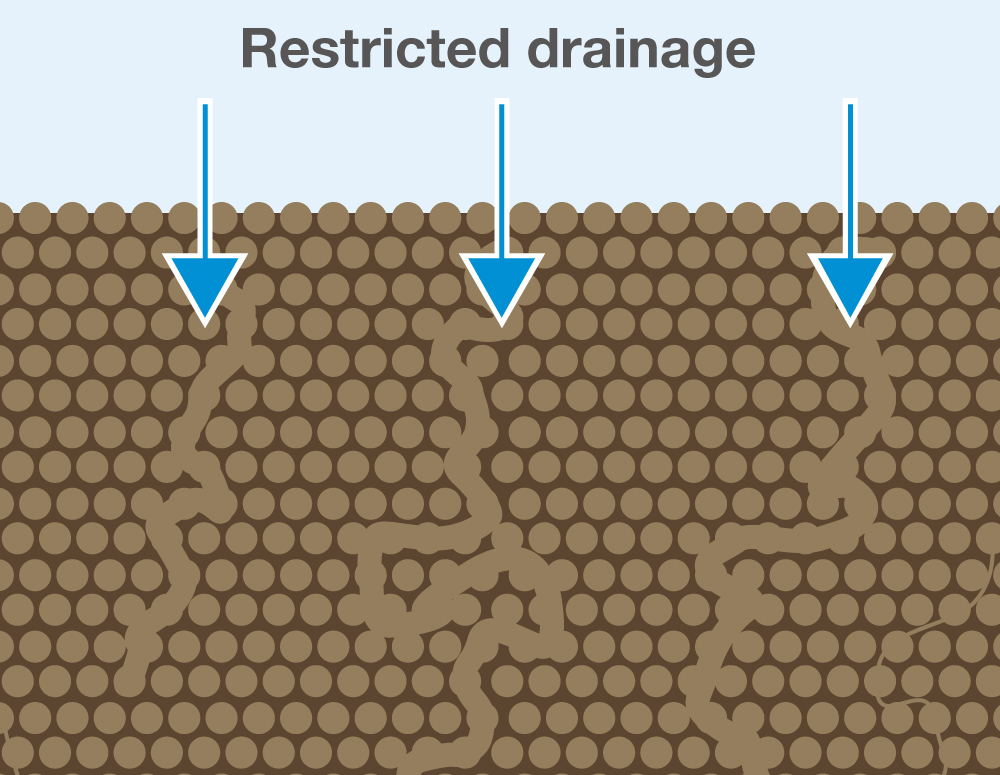- Home
- Knowledge library
- Characteristics of different soils
Characteristics of different soils
Whether it warms quickly, is prone to erosion or holds moisture, your soil will dictate the methods you use from cultivation to harvest and the yields you achieve. Learn the key properties of the six main soil types.
Sand
- Largest soil particle at 0.06–2 mm
- Large air spaces between particles
- Free circulation of air and good drainage
- Warms up quickly in spring and has a long growing season
- Drought-sensitive, often acidic
- Weak structure, so may slump or cap
- Prone to compaction by deep cultivation or harvesting in wet weather
- Can suffer from runoff and erosion by water and wind

Silt
- Smaller than sand, but bigger than clay, at 0.002–0.06 mm
- Air spaces and water channels are more restricted than in sandy soils
- Fertile, fairly well-drained and holds more moisture than sandy soils
- Easy to cultivate, except in dry conditions, but easily compacted
- Prone to capping, so needs careful management
- Damaged when worked or grazed in wet conditions

Clay
- Smallest particle at less than 0.002 mm
- Restricted air and water movement, so can lie wet for long periods
- Contains high levels of nutrients if drainage is adequate
- Easily compacted if poached while wet
- Bakes hard in dry conditions
- Unsuited to ploughing in spring if subsoil remains wet
- May crack in dry or frosty conditions, which can alleviate compaction

Loam
- A mixture of sand, silt, and clay particles
- Good water retention and nutrient holding capacity
- Generally easy to work
Peaty soils
- High in organic matter
- Wet and often acidic
- Easily compacted when wet
- Prone to drying and erosion if drained
- Unimproved peat has high biodiversity value, stores carbon dioxide and should be preserved
Chalk
- Also classed as alkaline soil
- Often shallow and free-draining
- Not all nutrients are available to plants because of high soil pH
Useful links
See how soils are classified into texture classes
Read the Principles of soil management guide
Soil-related problems and solutions
Order a printed copy of Principles of soil management
Have a question? Ask a member of the team:
.jpg)

